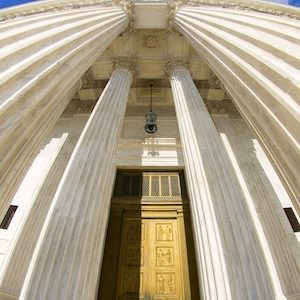Oil States Energy Services LLC v. Greene’s Energy Group, LLC, now scheduled for oral argument before the Supreme Court on November 27, is clearly receiving all the attention this fall. The possibility of finding Patent Trial and Appeal Board (PTAB) post grant proceedings unconstitutional cannot be understated. But oral arguments will also be heard on that same day in the less-noticed SAS Institute v. Matal. That case involves 35 U.S.C. § 318(a), which requires PTAB to “issue a final written decision with respect to the patentability of any patent claim challenged by the petitioner.” Despite the plain meaning of the statute, current PTAB practice is to only issue a final decision on some of the claims.
For example, if a post-grant petition only meets the “reasonably likely to succeed” standard on some claims, the PTAB trial only goes forward on those claims and the PTAB does not make any formal rulings on the patentability of the other claims. This practice was seen as proper by the Court of Appeals for the Federal Circuit (CAFC) in SAS Institute and in their prior decision in Synopsis v. Mentor Graphics , to enable the Patent Office to “secure the just, speedy, and inexpensive resolution” of post-grant proceedings. If the Supreme Court reverses the CAFC, the PTAB will be forced to address both the reasonable and unreasonable grounds in writing in every case.
Curiously, the patent bar seems conflicted as to whether a reversal would be good or bad for patentees. As to the potential downside for patent owners, a reversal by the Supreme Court may encourage petitioners to make as many arguments as possible. The patent owner then must respond to even the weak arguments, with the resulting waste of the parties’ resources on possibly irrelevant issues. Some patent owners also believe the current practice of partial institution is of significant value for other reasons. Patent owners are often anxious to get to trial in the parallel civil lawsuit. They can avoid a stay of such concurrent litigation, since at least some other claims will remain on the table even after the PTAB’s decision. Furthermore, some believe the need to address all claims in a PTAB trial will undermine early settlement opportunities.
Others see an upside for patent owners if the Supreme Court reverses. They see the PTAB’s current practice as eliminating one of the originally envisioned benefits of the AIA. At the present time, the parties are left with unaddressed claims that must still be litigated as if no post-grant proceeding had ever occurred. More importantly perhaps, the PTAB does not authorize an IPR to move forward unless there is a reasonable likelihood that the petitioner will prevail. When there is a decision to move forward on only some of the claims, that MUST mean that the PTAB would have decided against the petitioner on the other claims. Coupled with the presumption of validity that attaches to issued patent claims, such a decision could only mean the petitioner will be estopped from ever challenging those patent claims again.
Regardless of you or your patent counsel’s opinion on this, should any form of IPRs survive Oil States, the following SAS Institute decision should be watched with equal anticipation. A reversal in SAS Institute will no doubt have you rethinking your PTAB strategy.










